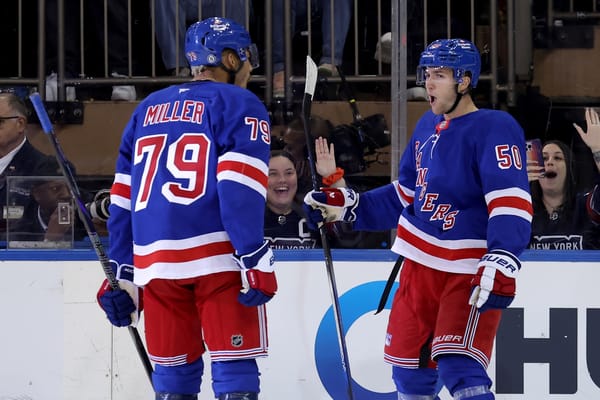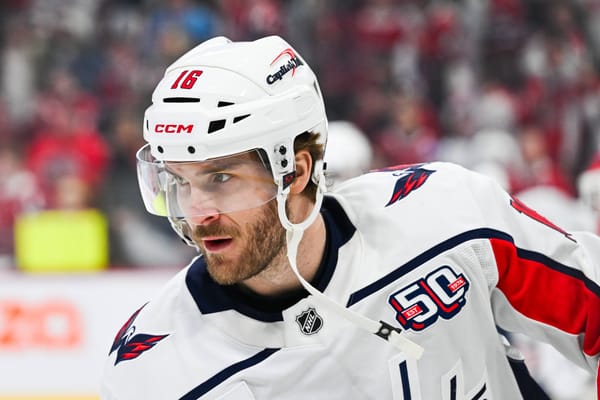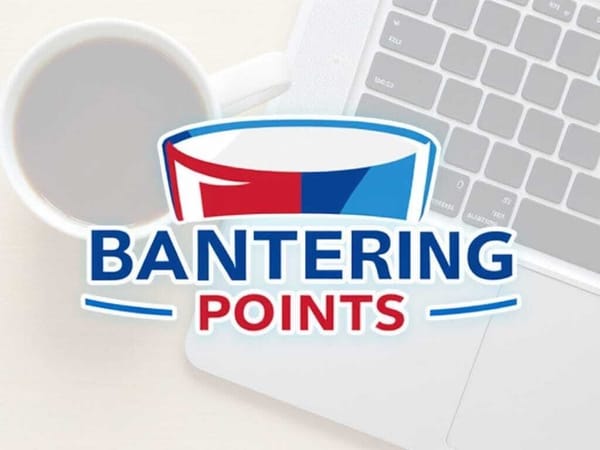A Cruel Twist of Fate for the Rangers
The Rangers, despite a much-improved underlying process, are struggling to score goals and win games.
Last season, the New York Rangers advanced to the Eastern Conference Final on the strength of Igor Shesterkin’s elite goaltending and strong special teams — in particular, a lethal power play. Their five-on-five play, however, was subpar for most of the season, especially their ability to generate offense. Five-on-five play had been an area of struggle for several years, so the thought (or at least my thought) was, if they could ever shore that up, they’d be in great shape with their goaltending and dynamic players on the power play.
Then came the start of this 2022-23 season. The Rangers, in the first eight games, have been...very good at five-on-five?? Surely, goals and wins would be pouring in then, yes?
Nope!
The Rangers have lost their last four games, including a shutout at the hands of Ilya Sorokin and the New York Islanders most recently on Wednesday night, despite 41 shots on goal. For an inability to score despite generating numerous chances to be the Rangers’ new problem sure is ironic.
This Makes No Sense But Also So Much Sense
The Rangers are struggling to score after netting a bunch of goals in the games prior to this four-game skid. The power play, red hot to start the year, has cooled off in a big way. The foreseeable Chris Kreider regression has hit hard. The kids are playing well but not finishing. The shots are coming, even with the team’s depleted depth.
Per Natural Stat Trick, the Rangers’ Corsi-for percentage (i.e., share of shot attempts) at five-on-five is 54.24 percent, which is good for fourth-best in the NHL as of this writing. Per 60 minutes, they have generated an average of 61.13 shot attempts at five-on-five, which is 10th-best in the league.
You might ask, “Well, shot attempts are great, but are they just throwing a bunch of pucks on net without getting enough quality chances?” I’m glad you asked! In fact, the Rangers do quite well when looking at expected goals, which takes shot quality into account. Their five-on-five expected goal share, again per Natural Stat Trick, is a solid 54.02 percent — ninth-best in the league. Per 60 minutes, they are generating 2.96 expected goals at five-on-five. This again ranks ninth in the league. They also rank seventh with 14.26 “high-danger” attempts per 60 minutes at five-on-five. Clearly, quality and quantity are both abundant for the Rangers. Offensively, the only thing that’s not is the actual goals.
The below graphic from Hockey Viz, although calculating expected goals slightly differently from Natural Stat Trick, tells the same overall story. It illustrates how the Rangers are generating quality scoring chances at a much higher rate than the league average.
On the one hand, the Rangers experiencing a string of losses while doing quite a few good things beneath the surface of their mediocre 3-3-2 record is a bit head-scratching. On the other hand, it is somewhat fitting in a terrible way for a team that thrived in spite of some troubling five-on-five play last season, and for large swaths of the Henrik Lundqvist era. Now, the opposite is happening: They are playing well overall but not winning. In that vein, perhaps this is a twist of fate that they somehow deserve. No, actually, I take that back. Rangers fans have been tortured enough.
Time to Panic?
In spite of this frustrating stretch and the cruelty of the hockey gods, there is no reason to panic. Sure, it’s fine to be annoyed and angered by the losses; that’s partly why I’m writing this post, as it is therapeutic. But you’d always prefer good process to bad, and over the long haul, the results should reflect that.
Shooting percentages, even for skilled finishers, can be fickle in a small sample, as Kreider and many others are experiencing right now. But if the Rangers continue to play this way for the majority of the season, the goals and the wins will come. We’ve already seen the variance in the first eight games; the Rangers scored 17 goals in their first four games but have scored just five in their last four. Not much has changed in their ability to generate chances, so things should even out over the long term.
The Rangers’ shooting percentage has dropped to a meager 7.36 percent in all situations, which ranks second-to-last in the league. Their team save percentage at all is only .895, which is 23rd in the league. Between their talent up front and in net, those numbers should improve dramatically over a longer period of time. It’s a good thing there are still 74 regular-season games left.
— Rob Luker (@RLuker12) October 27, 2022
There are small adjustments the Rangers can and should make. For one, they (i.e., Artemiy Panarin and Vincent Trocheck) should look to unload more shots from the right side of the ice on the power play, so that defenses have to respect them and aren’t able to cheat so much towards taking away the threat of Mika Zibanejad’s bomb from the left circle.
Defensively, the Rangers aren’t giving up too many shots and chances (although that fun 3-2 shootout loss to the Colorado Avalanche, where both teams had a ton of chances, is an exception), but they need to be more consistent with their defensive zone coverage when they are there — in particular, down low.
Head coach Gerard Gallant needs to learn how to shorten the bench a bit more when the team is in need of a goal, instead of giving Ryan Reaves (who shouldn’t be dressed most nights in the first place) and the rest of the fourth line offensive zone starts. Gallant and the rest of the organization also need to stop trying to make Libor Hajek a thing.
Most importantly, the Rangers need to get healthy so that Filip Chytil and Vitali Kravtsov, who are both sidelined, can finally get some consistent ice time together and give the Rangers better depth so that the pressure isn’t all on the top six to produce offense — even though they have been getting the chances.
Other than the injuries, these are all relatively small problems compared to the underlying five-on-five issues that plagued this team for years before this one. Overall, the process of play is good. As long as they keep that up, better luck and better results should soon follow.





